Sonny Hill at the Naismith Basketball Hall of Fame
Founded in 1968, the Sonny Hill Community Involvement Basketball League uses basketball as a foundation for teaching life skills. For thirty years or so, the Sonny Hill league reigned as the undisputed best summer high school basketball league in America. The Holcombe Rucker League in Harlem is also highly regarded. But, the talent in Hill League was unsurpassed. Gene Banks (Duke), Lewis Lloyd (Drake), Clarence Tillman (Kentucky/Rutgers), Mo Howard (Maryland), Pooh Richardson (UCLA), Nate Blackwell (Temple), Dallas Comegys (DePaul), Lionel Simmons (LaSalle), Kobe Bryant (NBA), Rasheed Wallace (North Carolina), Rip Hamilton (Connecticut) and Alvin Williams (Villanova) are just a few of the great scholastic players that laced ‘em up in the Hill League.
Gene Banks
The concentration of talent was incredible. You could walk in McGonigle Hall on Temple University’s campus and catch the incredibly strong Rico Washington (Weber State) battling the powerful low-post force, Brian Shorter (Pitt) on the blocks. If you were more attracted to guard play, the wizardry of Michael Anderson (Drexel) was on full display as he went against consummate Philly point guard Howie Evans (Temple), the blindingly quick Bruiser Flint (Drexel) or the explosive Steve Black (LaSalle). Summer basketball in Philadelphia was truly something to behold.
The Sonny Hill League was an outgrowth of the Charles Baker League. In 1960, Mr. Hill founded the Baker League as place for professional basketball players to work on their craft during the off-season. The four-team league that began playing outdoors on the concrete court of of North Philadelphia eventually grew to attract some of the biggest names in basketball. Over the years, Wilt Chamberlain, Guy Rodgers, Hal Greer, Billy Cunningham, Bill Bradley, Earl Monroe, Darryl Dawkins, Joe Bryant and World B. Free were regulars in the Baker League.
Wilt Chamberlain
It’s all gone!
The Baker League no longer exists and the Sonny Hill League is a just shell of what once existed.
Recently, I received a phone call early one morning from St. Joseph’s coach Phil Martelli. He asked, “Del what happened to the Hill League… I’m reading the box score from a college league playoff game and I only recognize one name – Biggie Minnis.” The Hill league no longer attracts the best high school and college players in the area. There can be no denying the fact… The Hill League has fallen off… That conversation with Martelli stuck with me for a few days. I brought the topic up with Bruiser Flint, Ashley Howard and Geoffrey Arnold. They coach at Drexel, Villanova and St. Joseph’s respectively. I asked each the same thing Martelli asked me: What happened to the Hill League?
The focus of the conversations was on two distinct questions: 1) Why did the Hill League become insignificant? And, 2) What have we lost as a result?
There is a consensus that the rise of AAU and shoe company teams contributed mightily to the demise of the Hill League. However, the more interesting question becomes: Could the outcome have been any different?
Brian Shorter
Mr. Hill’s tenacity and drive enabled him to form and maintain a youth sports league that is nearing it’s 50th year of existence. Perhaps, these same traits rendered him a unable to adapt and become more flexible when the AAU movement crept into Philadelphia. Rather than accommodate the schedules of the biggest AAU tournaments, Mr. Hill forced players to choose. Over time, the lure of jet travel across the country, stays in fine hotels and playing in front of 200-300 college coaches was too much for Philly’s best ballers to resist. Gradually, more and more began to play exclusively for prominent local AAU programs like Team Philly (Adidas), Team Final (Nike), WeRone (Under Armour) and Philly Pride (Under Armour).
The kids, however, being from Philadelphia needed an outlet to settle their neighbor “Ball-Beefs.” Rahim Thompson’s popular Chosen League has emerged to satisfy that thirst for local school yard competition in the summer. Thompson, ingeniously, decided to work around the schedules of the biggest AAU tournaments which take place during NCAA live periods. In this way, he has been able to have the very best scholastic players in Philadelphia participate in his league. The Chosen League has surpassed the Hill League as the place to see the best local players during the summer months.
Philly Schoolboy Legend Rysheed Jordan in the Chosen League
What have we lost? The best answer I could come with is: We have lost a great deal of “Social Captial”.
For Mr. Hill and his colleagues Claude Gross, Tee Shields, Fred Douglas, Vince Miller and James Flint the Sonny Hill League was about far more than just basketball. The Sonny Hill League Community Involvement League is an organization that not only includes roughly four dozen youth basketball teams, but also features career-counseling and tutoring programs.
It’s been that way since the beginning… “During that summer of ’68, gang warfare was a big problem all over the country,” Hill said. “Kids were dying. Neighborhoods were being torn up. So I decided to put my name on a league that would get some of kids who would be in gangs to focus their efforts on basketball… I talked to people all over the city. We got truces established. If a kid was found crossing a rival gang’s turf and he said he was going to play in the Sonny Hill League that got him a pass. At first it was a diversion for those kids. Now over the years we’ve grown into a program that gets kids off the streets, gets them learning and gets them a chance to lead productive lives.”
That’s Social Capital!!
Lionel Simmons
The basic premise of social capital is that social networks have value. Social capital refers to the collective value of all “social networks” [who people know] and the inclinations that arise from these networks to do things for each other [“norms of reciprocity”]. Through the Sonny Hill League, Philadelphia’s Basketball community was awash in social capital. Shit… were were wealthy in that regard.
Social capital emphasizes a wide variety of quite specific benefits that flow from the trust, reciprocity, information, and cooperation associated with social networks. Social capital creates value for the people who are connected and, at least sometimes, for bystanders as well. Think of all the trust people had in John Hardnett, Claude Gross and Tee Shields. Think of all the information the administrators of the Sonny Hill League possessed and shared with participants and bystanders.
The Sonny Hill League fostered and facilitated information flows (e.g. learning about scholarships, learning about coaches looking for players, exchanging information about players with college coaches, etc.). This was social capital.
The Sonny Hill League established norms of reciprocity (mutual aid). Alums to this very day do for one another. For example, I have called on Lionel Simmons to help kids pay for SAT prep materials and tutoring. The Sonny Hill League network connected folks who were in similar in-groups. The League facilitated connection among individuals.
Rasheed Wallace
The Sonny Hill League facilitated a broader “Philadelphia” identity and solidarity among Philly ballers. The Sonny Hill League helped translate an “I” mentality into a “we” mentality.
When the group of men keep an eye on one another’s players in the streets, that’s social capital in action. When a tightly knit community of youth coaches recommend players from other teams for scholarships, that’s social capital in action. Passing the hat to get up money to get a kid down south for school was social capital in action. Social capital can be found in friendship networks, neighborhoods, churches, schools, bridge clubs, civic associations, and even bars.
The Sonny Hill league has declined in significance. Philly’s basketball community is poorer as a result. We have lost a great deal of social capital.
The elite shoe company sponsored AAU programs will take care of the best 50-60 players… The Sonny Hill League would take care of 800.

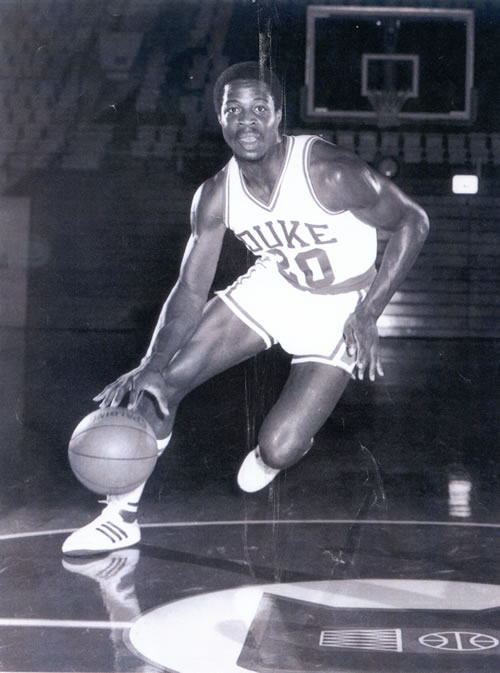
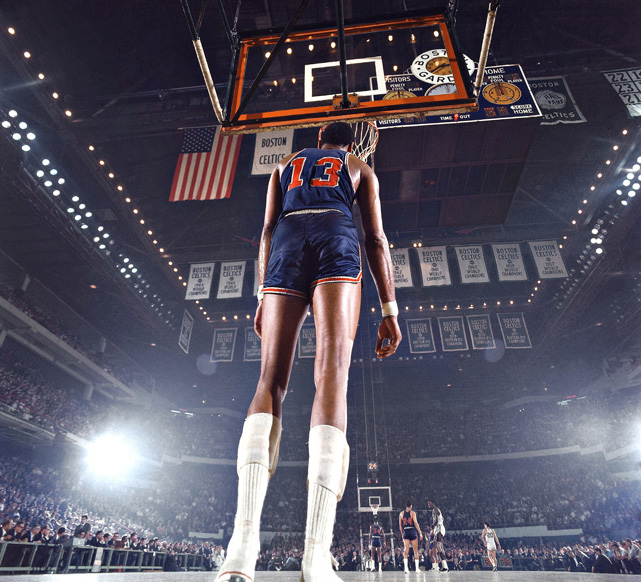
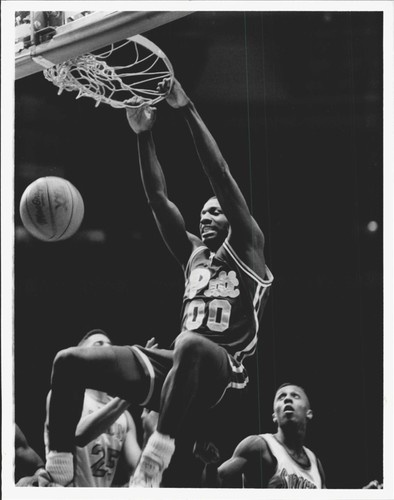

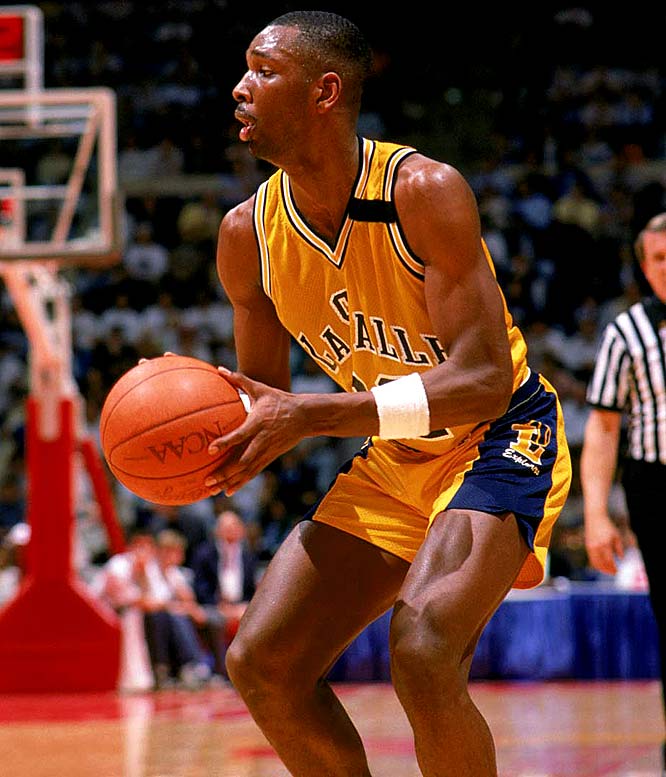
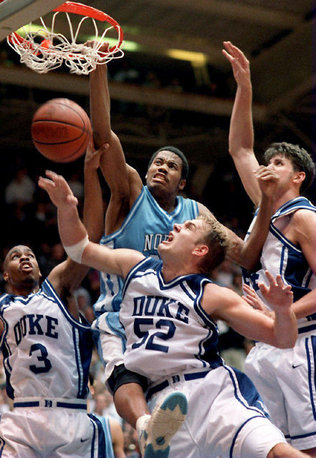
This article was well written and historically accurate. I think the AND1 movement showed shoe companies that there was a way to capitalize on players in their infancy while promoting their product. Perhaps the Hill League could change with the times and take some of his teams and tutors on the road.
There was no cell phones and social media during the height of the Hill League but because of the changes in times I was able to read this article on my phone and respond by text.
If there was anything players through the generations learned from the Hill League, it was how to adjust to the changing times.
Mr. Hill’s legacy lives on through the many players that were mentioned in this article who now have youth basketball programs of their own.
Delgreco,
I want to congratulate you on all of the great work that you do for kids in the Philly area. I’ve had the pleasure to work with some of the Gratz kids in the past and they speak very highly of you. My only suggestion is I don’t understand why you waste your time defending yourself with those clowns on the Temple website. Keep up all of the great work. I hope to meet you face to face one day.
Sincerely,
Gregory “Doc” Merrick
CRC Basketball
Office: 304-243-3490
Cell: 304-281-1427
http://www.CancerResearchClassic.org
The league is is a constant reminder to its participents that for our youth to find their paths of success it takes support and guidance from outside the home. Communitys have changed from the extended family in the neighborhood where all kids were supported and tutored. Now, the star athlete has all the help and many others never find their talent or gift. In the Hill league all kids receive the same guidance. The kids are encouraged to do well on the court but there are just as many conversations with the youth about school from Mr. Hill as well as the volunteer coaches.
Hello I’m looking for Steve Black who played Basketball at LaSalle. I read on your site that you write about him.Would you have some information about him where he lives today and how I could reach him?Any help is appreciated..Mike
He’s in Philly… He’s active on Facebook…
Yes, a very reflective article, but social capital during the period of the Hill League was human contact and guidance, while in the 90’s social capital is electronic, not human contact. The transition from one period to another takes adjustments, being adapable, and conforming to new realities, trends, and innovations as your article points out. Hey, as you suggest his contributions can not be over looked or forgetten, a job well done!
Great article!
I spoke with Mr. Hill today. He still has a league at Audenreid High School. Which has teams from grade school through high school. He is still all about the kid, the players and the community. I’m taking my son down to play in this “Legendary League.”. Anybody with the money can find an AAU team that will take your money. Your son might or might not play. It’s just the vogue thing in basketball right now that will probably burn itself out. The real ballers are still in the rec centers, really getting in. AAU is good for some but not everyone. It’s not the same and I thank God Sonny Hill is still around one of the last great Philly Legends left. Tom Brady.
I know that Mr. Hill is still at it. The piece is about the shift in the grassroots landscape and the social costs of the shift.
It is well chronicled that business sustain thenselves when they have the ability to adapt to change. Sonny Hill did not adapt to the changing landscape in basketball.
Sustainability is all about making decisions that have long term implications.
Delgreco great stuff. Having come in from the suburbs and played during the Dallas Comegys years it was an honor and a privilege to play with the great players under the tutelage of the great Sonny Hill. Sorry to hear about the league. It was funny at the time that Mr. Hill strongly encouraged the kids to where the “Keds” sneakers, as he was a spokesperson for them. Unfortunately the big sneaker companies were developing and I think started the cause of the downfall of the Sonny Hill league. The speaker companies ultimately led to the development of the AAU programs. As I’ve traveled the country anybody who knows anything about Philadelphia basketball always have great admiration of the league. Good stuff.
Imagine if kids stopped fishing with their parents,siblings, or mentors because they could go to tournaments and get free gear while fishing for the biggest fish or the most fish. Imagine what would be lost. The small talk. The advice. The lessons on tying knots that will invariably be passed down to other generations. The love of the outdoors. The act of posing for a photo in order to later share that proud moment.
Playing a sport is a great deal like fishing. In sports,
we practice our craft. Fishing is not different. We must learn how to cast into tough, tight places. We must calculate the ramifications of our decision to cast near a tree, knowing full well that we could get our hook, line and bobber caught in a way where it may not be retrievable.
Secondly, fishing makes us prepare for competition. We need to make sure that we have our tackle box in order. We need to bring the right bait and lures. We may also prepare by reading a fishing report in a local paper or by perusing it online.
Fishing helps one to understand loss. At times, we may lose. It had nothing to do with our preparation, or lack thereof. As a fisherman, I have been skunked plenty of times. I have even returned to a spot with the same bait, with the same weather, hoping to nail a big one, only to match away befuddled. It explains why inferior teams sometimes defeat better teams, and beat them soundly.
Fishing for me is not based on an extrinsic value system. To me, those who seek a few pairs of sneaks, some decent hotels, and free airfare will eventually become disappointed in basketball. Fishing, for me has many rewards. I love watching dragonflies perch upon my rod tip. I enjoy observing an occasional kingfisher catch a fish. I enjoy releasing a fish back to its habitat. I’ve enjoyed witnessing snakes glide effortlessly upon the lake’s surface. At times, I’ve seen a bald eagle make an appearance.
I hope that today’s youth can find that intrinsic value of sport. I’ve grown to appreciate more of the quiet time while fishing. It reminds me why I do what I do. The activities that we do in life, especially the recreational items, should be enjoyable.
Basketball should show us how improvement is a process. We need patience. We need practice. We should celebrate achievements, no matter how small.
In closing, I’d rather have my sons being boys or young men, who are going to enjoy playing a great game, can work well with their teammates, go home tired, and not exasperated,and to realize that if they work hard, and have the ability, that they will be noticed eventually.
If one can instill work ethic, teamwork, kindness, love of the game and good citizenship, then they have beaten any and all clubs. AAU may give away free sneaks, but I bet that many coroners, have sadly removed shiny, new sneaks from many people who have been taken by violence too soon. Best of luck!
S.M. Combs
Thank you for this thoughtful response!!
I was crazy about Big 5 basketball in the late 60’s and early 70’s. I would watch the one TV in the house that had UHF to catch Howard Porter and Kenny Durrett going at it. Sonny Hill was a frequent guest on these broadcasts. His passion and enthusiasm was contagious and unforgettable. That was an era where one energetic man like Sonny could make a difference. Not sure he could do it today in this environment b